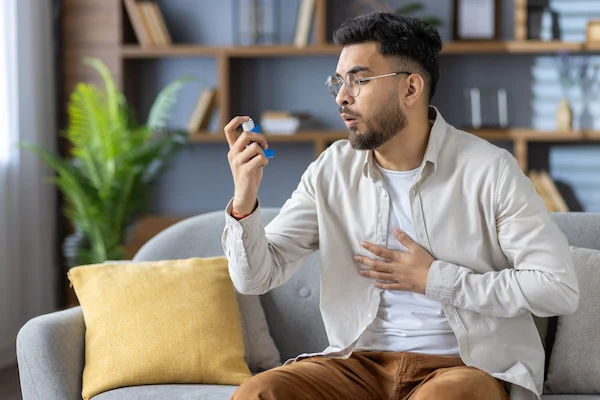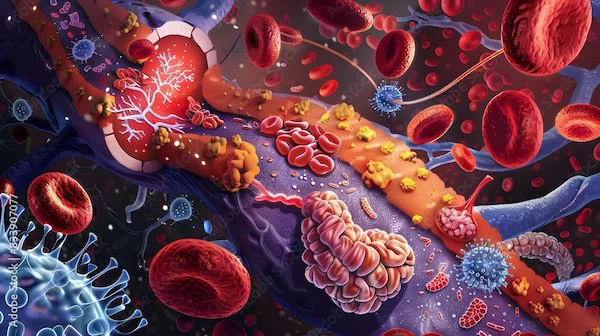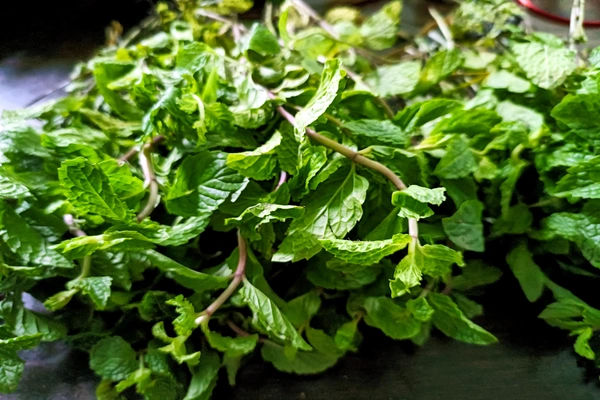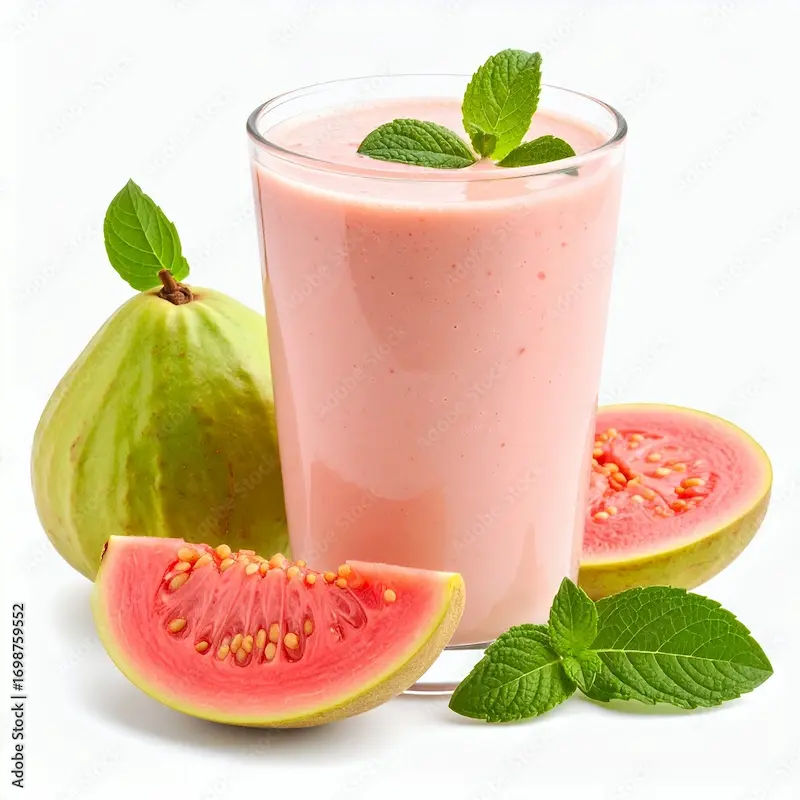Guide to Cold Sweat And Health Conditions May Cause Diaphoresis
Learn what causes cold sweats, how diaphoresis differs from normal sweating, and which medical conditions can trigger it. Explore causes, red flags, diagnosis, treatment, and prevention tips.


Introduction
Cold sweats can feel alarming: your skin turns clammy, you break out in sweat with cool or normal skin temperature, yet you’re not overheating. While a brief cold sweat can be your body’s normal stress response, it can also signal an underlying health issue that deserves attention. This comprehensive, plain-language guide explains what a cold sweat is, why it happens, and which health conditions may cause diaphoresis (medical term for profuse sweating). You’ll learn red flags that require urgent care, how doctors diagnose causes, and practical steps you can take right away. We’ll walk through treatment options—from simple at-home strategies to medical therapies—and share evidence-based tips for prevention. If you’ve ever typed “cold sweat health” into a search bar, this is your one-stop resource to make sense of symptoms and take confident next steps.
Before we dive in, remember: cold sweat combined with chest pain, severe shortness of breath, confusion, or fainting is an emergency—call your local emergency number immediately. For persistent, unexplained sweating or related symptoms, consider consulting a clinician online with Apollo 24|7 for evaluation, and if lab tests are advised, Apollo 24|7 offers convenient home collection for tests like fasting glucose, HbA1c, thyroid (TSH), and complete blood count.
What Is a Cold Sweat? Understanding Diaphoresis
A cold sweat is sweating that occurs when you’re not overheated, often with cool or clammy skin. Unlike sweating from exercise or heat (where your skin is warm or hot), a cold sweat shows up when the body activates its stress response—usually to pain, fear, a drop in blood sugar, low blood pressure, or illness. Diaphoresis is the medical term for profuse, often sudden sweating, which can include cold sweats.
Diaphoresis vs hyperhidrosis: Hyperhidrosis refers to excessive sweating beyond what’s needed for temperature control. It can be primary (focal, often starting in adolescence, affecting palms, soles, underarms) or secondary (due to another condition or medications). Diaphoresis is typically generalised and acute, often tied to a triggering event like hypoglycaemia, infection, or heart issues. Many people search “cold sweats without fever”; that pattern leans away from infection and toward causes like anxiety, pain, hypoglycaemia, or shock—but always consider the whole symptom picture.
The “clammy skin” clue: Clammy, cool, moist skin happens when the body tightens skin blood vessels (vasoconstriction) while stimulating sweat glands. This combination is a hallmark of cold sweat and helps you and clinicians distinguish it from heat-related sweating.
The Body’s Wiring: Why Cold Sweats Happen
Cold sweats are tied to the autonomic nervous system—specifically the sympathetic (“fight-or-flight”) branch. When the brain senses threat, pain, low oxygen, or dropping blood sugar, it releases catecholamines (adrenaline, noradrenaline).
This:
- Increases heart rate and redirects blood to vital organs.
- Narrows skin blood vessels, making skin cool and pale.
- Stimulates eccrine sweat glands via sympathetic cholinergic fibres, creating moisture even when you’re not hot.
Why does your skin feel cold and clammy? Vasoconstriction cools the skin surface while sweat makes it moist—hence “cold sweat.” This response helps the body maintain blood pressure during stress and can be an early sign of shock, hypoglycaemia, or severe pain. People often report “sudden sweating and nausea” with motion sickness or stomach bugs—another autonomic reflex.
Everyday Triggers That Can Cause Cold Sweats
Not all cold sweats signal a dangerous condition. Common non-emergency triggers include:
- Stress, anxiety, and panic attacks: Hyperventilation and adrenaline surges can cause cold sweat, tremor, chest tightness, and dizziness. Breathing retraining often helps.
- Pain and nausea: Migraine, severe menstrual cramps, kidney stones, gallbladder attacks, gastroenteritis, and motion sickness can all trigger diaphoresis via the vagus nerve and sympathetic system.
- Mild hypoglycaemia: Skipping meals, heavy exercise without refuelling, or drinking alcohol on an empty stomach can drop glucose into the low range, causing cold sweat, shakiness, hunger, and palpitations.
- Dehydration or standing up too quickly (orthostatic symptoms): Transient lightheadedness with clamminess can occur while your body catches up.
Consult Top Specialists Here
Medical Conditions Linked to Diaphoresis and Cold Sweats
Cardiovascular emergencies: Heart attack (myocardial infarction) often presents with chest pressure, shortness of breath, nausea, and breaking out in a cold sweat. Pulmonary embolism (a lung blood clot) can cause sudden breathlessness, chest pain, and diaphoresis. Circulatory shock—from severe bleeding, dehydration, allergy (anaphylaxis), or infection—produces clammy skin, rapid weak pulse, and confusion. These require immediate emergency care.
Endocrine/metabolic conditions: Hypoglycaemia (glucose <70 mg/dL) is a classic cold sweat trigger; symptoms include shakiness, confusion, and palpitations. Hyperthyroidism may lead to heat intolerance and sweating, though skin is usually warm. Pheochromocytoma (a rare adrenal tumour) causes episodic headaches, palpitations, high blood pressure, and profuse sweating. Adrenal crisis and severe hypoxia can also cause diaphoresis.
Infections: Sepsis (body-wide infection) can cause fever or low body temperature, rapid heart rate, cold clammy skin, and confusion. Tuberculosis and some cancers (like lymphoma) are linked to night sweats; malaria causes cyclic fevers and sweats.
Neurologic/autonomic disorders: Autonomic neuropathy (for example, from diabetes) can disrupt sweating patterns—sometimes excessive above the waist and reduced below. Parkinson’s disease and spinal cord conditions may alter sudomotor function.
Hormonal transitions: Menopause and perimenopause produce hot flashes and night sweats tied to oestrogen fluctuations—sometimes felt as sudden dampness followed by chills, especially at night.
Medications and substances: Antidepressants (SSRIs/SNRIs), opioids, insulin and some diabetes drugs (sulfonylureas), antipyretics, chemotherapy, alcohol, and caffeine can trigger sweating. Alcohol or opioid withdrawal commonly causes cold sweats.
Severe pain syndromes: Renal colic (kidney stones) and biliary colic (gallbladder stones) often present with cold sweat, pallor, and restlessness from intense pain.
Red Flags: When Cold Sweats Mean “Act Now”
Seek emergency care immediately if cold sweats occur with:
- Chest pain/pressure, jaw/arm/back pain, shortness of breath, or nausea/vomiting
- Signs of shock: pale clammy skin, rapid weak pulse, confusion, fainting
- Severe shortness of breath or sudden one-sided leg swelling (possible pulmonary embolism)
- High fever, stiff neck, confusion, or rash (possible meningitis or sepsis)
- Severe abdominal pain (possible surgical emergency)
- Pregnancy with heavy bleeding, severe headache, or vision changes
Call your doctor urgently (within 24–48 hours) for:
- Recurrent cold sweats without a clear trigger
- Unexplained weight loss, night sweats, or persistent low-grade fever
- New tremors, heat intolerance, or palpitations (possible thyroid issues)
- Diabetes with frequent “cold sweat low blood sugar” episodes
If symptoms persist beyond two weeks, consult a doctor online with Apollo 24|7 for further evaluation.
Consult Top Specialists Here
How Doctors Diagnose the Cause of Diaphoresis
History and exam: Your clinician will ask about timing (day/night), triggers (stress, exertion, meals), associated
symptoms (pain, fever, palpitations, dizziness), medications/substances, and travel/exposures. They’ll check vital signs,
hydration status, skin appearance, heart/lung exam, and targeted neurologic or thyroid signs.
Tests and imaging:
- Bedside: fingerstick glucose if hypoglycaemia suspected; ECG if chest symptoms; pulse oximetry.
- Laboratory: CBC (infection/anaemia), CRP/ESR, electrolytes, fasting glucose and HbA1c, thyroid panel (TSH, free T4), pregnancy test where relevant, liver/kidney function. Specialised tests may include plasma/urine metanephrines (pheochromocytoma) or cortisol.
- Imaging: chest X-ray for respiratory/infectious causes; ultrasound/CT for abdominal pain; echocardiogram as indicated. Cardiac enzymes (troponin) if heart attack suspected.
Apollo 24|7 offers convenient home collection for tests like fasting glucose, HbA1c, TSH, CBC, and vitamin D if fatigue is prominent. If your condition does not improve after trying recommended methods, book a physical visit to a doctor with Apollo 24|7.
First Aid and Immediate Steps You Can Take
Suspected low blood sugar: Use the ADA’s 15–15 rule—eat 15 grams of fast carbs (for example, 4 glucose tablets, 120
ml juice), wait 15 minutes, recheck; repeat if still <70 mg/dL, then eat a balanced snack.
Suspected heart attack or shock: Call emergency services. Sit or lie down; if lightheaded, lie supine and elevate legs
unless there’s suspected head/neck injury. If no allergy and not on blood thinners, chew a standard aspirin while
awaiting help (only if heart attack suspected per emergency guidance). Keep the person warm.
Anxiety/panic episodes: Slow-breathing drill—inhale through the nose 4 seconds, exhale through pursed lips 6 seconds, repeat for two minutes. Use cold face immersion or splash cool water to activate the dive reflex and calm the body.
Nausea/motion sickness: Sit upright, sip clear fluids, consider ginger tea; a cool compress on the forehead can ease the clammy feeling.
Treatment Options: From Underlying Causes to Symptom Control
Treat the root cause:
- Cardiac events: urgent reperfusion and guideline-directed care.
- Hypoglycaemia: adjust diabetes medications, meal timing, and exercise plans; consider continuous glucose monitoring.
- Infections: targeted antibiotics/antivirals and source control.
- Endocrine: antithyroid drugs for hyperthyroidism; surgery/meds for pheochromocytoma; steroid replacement for adrenal crisis where appropriate.
Managing anxiety/autonomic triggers: Cognitive behavioural therapy, exposure therapy for panic, and techniques like diaphragmatic breathing reduce episodes. Limiting caffeine and alcohol can lower “cold sweat anxiety” bouts. For severe cases, short-term medication may be used under medical guidance.
Hyperhidrosis and persistent diaphoresis: If excessive sweating continues after underlying causes are managed, treatments include:
- Clinical-strength antiperspirants (aluminium chloride hexahydrate)
- Iontophoresis for hands/feet
- Botulinum toxin injections, which can reduce sweating by up to 90% in treated areas for months
- Oral anticholinergics (for example, glycopyrrolate), balancing side effects like dry mouth, constipation
- Microwave thermolysis (for example, miraDry) for axillary sweating
- Endoscopic thoracic sympathectomy for severe refractory cases
Prevention: Daily Habits to Reduce Cold Sweats
Nutrition and glucose stability: Aim for balanced meals with protein, fibre, and healthy fats to prevent glucose dips; keep portable carbs on hand if you’re prone to hypoglycaemia. Alcohol with food, not on an empty stomach.
Sleep, stress, and stimulants: Prioritise 7–9 hours of sleep; practise daily stress hygiene (brief breathwork, walks). Cut back on caffeine if you notice “cold sweats and dizziness” after coffee or energy drinks. Hydrate, especially in hot climates or on workout days.
Clothing and environment: Dress in breathable layers and use moisture-wicking fabrics; keep your bedroom cool to reduce night sweats. Consider a fan or cooling pillow.
Special Situations: Children, Pregnancy, Older Adults, Athletes
Children and teens: Cold sweat with vomiting, abdominal pain, or fainting requires prompt evaluation. In adolescents,
anxiety and hypoglycaemia (after sports) are common; keep quick carbs available.
Pregnancy and postpartum: Hormonal shifts can increase sweating and vasovagal symptoms. However, cold sweats with severe headache, vision changes, chest pain, or heavy bleeding warrant urgent care.
Older adults: Blunted fever response means infections may present with cold sweats, confusion, and weakness rather than high temperature. Medication side effects and dehydration are frequent contributors.
Athletes: Overexertion and inadequate fuelling predispose to hypoglycaemia and vasovagal episodes. Balance training intensity with carbohydrate intake and hydration.
Myths vs Facts About Cold Sweats
- Myth: Cold sweats always mean a heart attack. Fact: They can be benign (anxiety, nausea) but are a red flag with chest symptoms.
- Myth: If you don’t have a fever, it’s not an infection. Fact: Sepsis in older adults may present without fever but with clammy skin and confusion.
- Myth: Sweating is just a skin problem. Fact: Diaphoresis is often a whole-body signal of autonomic or metabolic stress.
Symptom Map: What Cold Sweats Plus “X” Might Mean
- With chest pressure/shortness of breath: consider acute coronary syndrome; call emergency.
- With shaking, hunger, palpitations: consider hypoglycaemia; use 15–15 rule.
- With fever/chills, fast breathing: consider infection; urgent care.
- With weight loss/night sweats: consider infection (TB), endocrine issues, or haematologic conditions; see a doctor.
- With tremor, heat intolerance, anxiety: consider hyperthyroidism; check TSH.
- With severe back/side pain and restlessness: consider kidney stones.
Preparing for Your Visit: What to Track and Bring
- A 7-day diary: time, activity, food/drink, stress level, sleep, and symptoms (including “clammy skin causes” episodes).
- Medication/supplement list; recent illnesses; travel history.
- Specific questions: Could my medications be contributing? Do I need tests for thyroid, glucose, or infection? What steps should I take if symptoms recur?
If symptoms persist beyond two weeks or interfere with daily activities, consult a doctor online with Apollo 24|7 for further evaluation.
Conclusion
Cold sweats are your body’s way of saying, “Pay attention.” Sometimes, the message is simple—eat, hydrate, or pause and breathe. Other times, it’s an urgent alarm, especially when paired with chest symptoms, severe breathlessness, confusion, or signs of shock. Understanding what a cold sweat is, how diaphoresis works, and the contexts that bring it on helps you respond quickly and appropriately. Focus on the pattern: what else is happening when the sweating starts? Track your triggers, stabilise your meals to avoid glucose dips, and practise practical tools like the 15–15 rule and slow breathing. If symptoms recur or you’re unsure what’s behind them, getting timely medical advice makes all the difference. Consult a doctor online with Apollo 24|7 to review your symptom diary and plan the right tests. Should you need labs, Apollo 24|7’s home collection can check glucose, HbA1c, thyroid, CBC, and more. With the right knowledge and a plan, you can turn an alarming cold sweat into a manageable, actionable signal.
Consult Top Specialists Here
Consult Top Specialists Here

Dr. Bhavya Swarnkar
Dermatologist
14 Years • MBBS, MD, DNB (Dermatology, Venereology & Leprosy) Former Senior Resident, Department of Dermatology- AIIMS, New Delhi. Associate Consultant - Dermatology.
Bilaspur
Apollo Hospitals Seepat Road, Bilaspur
(225+ Patients)

Dr. Deepak Jakhar
Dermatologist
8 Years • MBBS, MD (Dermatology)
Delhi
DERMOSPHERE CLINIC,, Delhi

Dr. Somshukla Ray
Dermatologist
10 Years • MBBS, MD (Dermatology,Venerology & Leprosy), DNB (Dermatology,Venerology & Leprosy)
Kolkata
MCR SUPER SPECIALITY POLY CLINIC & PATHOLOGY, Kolkata

Dr. Kaushiki Hajra
Dermatologist
5 Years • MBBS, MD Dermatology, Venerology & Leprosy
Kolkata
MCR SUPER SPECIALITY POLY CLINIC & PATHOLOGY, Kolkata

Dr. Kaushiki Hajra
Dermatologist
5 Years • MBBS,MD(D V & L)
Kolkata
VDC Clinic, Kolkata
(75+ Patients)
Consult Top Specialists Here

Dr. Bhavya Swarnkar
Dermatologist
14 Years • MBBS, MD, DNB (Dermatology, Venereology & Leprosy) Former Senior Resident, Department of Dermatology- AIIMS, New Delhi. Associate Consultant - Dermatology.
Bilaspur
Apollo Hospitals Seepat Road, Bilaspur
(225+ Patients)

Dr. Deepak Jakhar
Dermatologist
8 Years • MBBS, MD (Dermatology)
Delhi
DERMOSPHERE CLINIC,, Delhi

Dr. Somshukla Ray
Dermatologist
10 Years • MBBS, MD (Dermatology,Venerology & Leprosy), DNB (Dermatology,Venerology & Leprosy)
Kolkata
MCR SUPER SPECIALITY POLY CLINIC & PATHOLOGY, Kolkata

Dr. Kaushiki Hajra
Dermatologist
5 Years • MBBS, MD Dermatology, Venerology & Leprosy
Kolkata
MCR SUPER SPECIALITY POLY CLINIC & PATHOLOGY, Kolkata

Dr. Kaushiki Hajra
Dermatologist
5 Years • MBBS,MD(D V & L)
Kolkata
VDC Clinic, Kolkata
(75+ Patients)
Consult Top Specialists Here

Dr. Bhavya Swarnkar
Dermatologist
14 Years • MBBS, MD, DNB (Dermatology, Venereology & Leprosy) Former Senior Resident, Department of Dermatology- AIIMS, New Delhi. Associate Consultant - Dermatology.
Bilaspur
Apollo Hospitals Seepat Road, Bilaspur
(225+ Patients)

Dr. Deepak Jakhar
Dermatologist
8 Years • MBBS, MD (Dermatology)
Delhi
DERMOSPHERE CLINIC,, Delhi

Dr. Somshukla Ray
Dermatologist
10 Years • MBBS, MD (Dermatology,Venerology & Leprosy), DNB (Dermatology,Venerology & Leprosy)
Kolkata
MCR SUPER SPECIALITY POLY CLINIC & PATHOLOGY, Kolkata

Dr. Kaushiki Hajra
Dermatologist
5 Years • MBBS, MD Dermatology, Venerology & Leprosy
Kolkata
MCR SUPER SPECIALITY POLY CLINIC & PATHOLOGY, Kolkata

Dr. Kaushiki Hajra
Dermatologist
5 Years • MBBS,MD(D V & L)
Kolkata
VDC Clinic, Kolkata
(75+ Patients)
More articles from General Medical Consultation
Frequently Asked Questions
1) What causes cold sweats without fever?
Cold sweats without fever often stem from stress, anxiety, pain, hypoglycaemia, medication effects, or shock. Evaluate accompanying symptoms and use a cold sweat health decision tree; chest pain or confusion requires emergency care.
2) Are cold sweats a sign of a heart attack?
They can be. Cold sweat with chest pressure, shortness of breath, nausea, or pain radiating to the jaw/arm/back is a classic heart attack pattern—call emergency services immediately.
3) How do I stop cold sweat from low blood sugar?
Use the 15–15 rule: take 15 g fast-acting carbs, wait 15 minutes, recheck, repeat if needed, then eat a balanced snack. Review medications and meal timing with your clinician to prevent future episodes.
4) What’s the difference between diaphoresis and hyperhidrosis?
Diaphoresis refers to profuse, often sudden sweating tied to stress, illness, or pain; hyperhidrosis is chronic excessive sweating, often focal (palms, soles, underarms). Treatments differ, though they can overlap.
5) Can menopause cause cold sweats at night?
Yes. Hormonal fluctuations can cause night sweats and hot flashes, sometimes felt as sudden dampness with chills. Keep your room cool, avoid late alcohol/spicy foods, and discuss options like CBT, nonhormonal meds, or HRT with your clinician.




